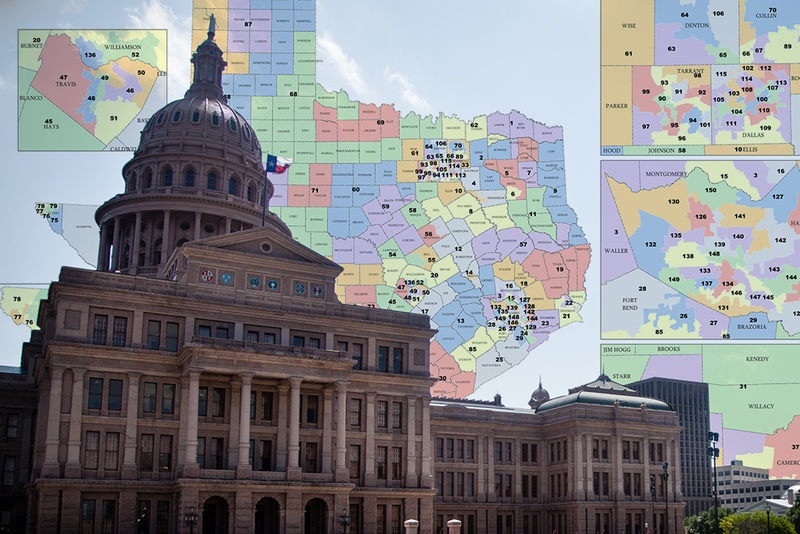The Trib has a good explainer.
So will the Legislature redraw the congressional map? And if so, when?
Here’s where it gets tricky. Friday’s order made it clear that the 2011 map cannot stand, but it did not order anyone to immediately redraw it. That might be because that map wasn’t actually in effect.
Amid the legal wrangling, Texas has conducted elections with a court-approved interim map. [Michael] Li, the redistricting expert [with the Brennan Center for Justice at New York University Law School], said the court must still rule on that map, drawn in 2013. It’s not clear when that will happen. Striking down the 2013 map is something of a formality, Li said, because the boundaries of two of its districts — Farenthold’s 27th and Doggett’s 35th — are identical to those drawn in 2011.
It’s anybody’s guess when Texas will get new maps — or even who will draw them. Generally, courts will give lawmakers another crack at drawing a map that’s been struck down. But plaintiffs could argue that Texas can’t be trusted to try again, pushing instead for an alternative fix.
Can Texas appeal Friday’s ruling?
Sure. Texas Attorney General Ken Paxton could ask the U.S Supreme Court to weigh in on the case. But it’s not clear when or whether the Republican will do that — largely because of how open-ended the ruling is.
“Since this is an interim order that does not propose any relief, the State is evaluating its options, which may be impacted by any future court rulings,” Kayleigh Lovvorn, a Paxton spokeswoman, told the Texas Tribune on Monday.
What about Texas’ state House and Senate maps?
The courts have settled squabbles over the state Senate map, but a challenge to the House boundaries is still pending. It’s not clear when the judges will rule.
What are the larger implications of Friday’s ruling?
Experts call it huge that the judges found “intentional” discrimination in the congressional map — a condition that could ultimately put Texas back on the list of states that need permission to change their election laws.
A 2013 Supreme Court ruling — Shelby County v. Holder — sprung Texas and other states with a history of discrimination from that list. But Section 3 of the Voting Rights Act includes a “bail-in” provision allowing courts to put a state back under supervision (a process called “preclearance”) if it is found to have knowingly discriminated in changing its election laws.
“This is a big test of whether the Voting Rights Act still has some teeth,” Li said.
Before the Shelby County ruling, Texas needed the U.S. Department of Justice’s signoff to change its election laws. If courts again ordered such supervision, Texas could find a sympathetic ear from the current U.S. attorney general, Jeff Sessions, who applauded the Shelby County decision in 2013.
But if the judges give Texas a supervisor, they could choose someone other than the Justice Department — another court, for instance.
“The court has broad discretion in defining how preclearance will work,” Li said. “Section 3 [of the Voting Rights Act] is very untested, and this case will help define what a court can and cannot do.”
See here for the background. If you want even more from Michael Li on this, see what he has to say at Rick Hasen‘s place. I didn’t know that about Section 3. I had been skeptical about bail-in to preclearance having much effect since the Sessions Justice Department is a cruel joke, but if Texas has to get pre-approval on any changes from a federal court, that changes things. And with this ruling, there may be two cases that require preclearance again. Maybe this time, crime really didn’t pay. In any event, at this point we need 1) a remedy for the Voting Rights Act violations, which begins with a new map; 2) some process for drawing that new map – it could be the court, if the plaintiffs can argue that the Lege cannot be trusted; 3) a ruling on the State House map, and a remedy for it if it too is ruled to be illegal; and 4) a ruling on Section 3 bail-in. Time is officially of the essence, so let’s hope we start getting answers to these questions soon.


My understanding of the bail-in is that the Justice Department does the preclearance… not that it really matters all that much because there’s been plenty of litigation on redistricting among The Usual Suspect states, preclearance or no. With preclearance the complaining party is the State of (–New Antebellum–), without it’s DoJ (well, maybe not anymore) and various interested parties.
“Discrimination”?!…Texas?!…no way…
I’m hoping Texas will redraw a district for libertarians like me. Simply create a district that encompasses my house, and the house of my next door neighbor who is usually like minded, and libertarians will again have representation in Texas, which has been sorely lacking since Ron Paul retired.